One major trait that defines top-notch customer service is understanding consumer behavior –the study of individuals, groups, or organizations and all the activities associated with the purchase, use, and disposal of goods and services, including the consumer’s emotional, mental and behavioral responses that precede or follow these activities.
Creating a product that customers cherish is not an easy thing to do, especially if you don’t know what drives their buying behavior.
Before you come up with a product or service, it’s really helpful to tap into the world of consumer psychology and borrow insights from there. This is important because the difference between brands that offer good customer service and amazing customer service is understanding consumer psychology.
So to help you attract, convince, and convert more people with your customer service, this article will walk you through 11 customer service psychology secrets. But before we get into that, let’s start by defining customer service psychology so that you get an in-depth understanding of what we talking about.
So, what is customer service psychology?
The idea behind customer service psychology is understanding not just the behaviors of the customers, but the emotions that drive them to behave in a certain way.
Customer service psychology takes a deep dive into how customers’ thoughts, beliefs, feelings, and perceptions influence how we buy and relate to products and services. Customer service agents must have intelligence and insight into the actual and target customers.
Without customer intelligence, it’s impossible for customer service agents to understand customers, communicate better with them, enhance marketing effort and strategy, and to personalize service.
Understanding the emotions of customers isn’t a stroll in the park, this is why many businesses try to cover up their lack of understanding of customer emotions by either adding more features to their services or lowering their prices so as to convince customers to buy from their brands.
But if I can be brutally honest, you really can’t cover up your lack of emotional understanding for a long time.

Nowadays customers are smart and savvy and once you fail to connect with them emotionally…expect a higher churn rate.
Whether your customers reach out to you via phone, email, or social media, they have to walk away with a positive experience regardless of how the conversation started.
The eCommerce industry has grown to be so fierce over the years and if your customer service department can’t handle different customer emotions, then the sales will begin to plummet in no time.
11 Psychology Secrets that turn window shoppers to buyers
Great customer service is much more than a purchase and an exchange of pleasantries. What makes customer service pay more dividends are the following 11 psychology secrets:
1. Share your Brand Story
Dr. Roger Schank, the author of Tell Me a Story: Narrative and Intelligence, once said:
Humans are not ideally set up to understand logic; they are ideally set up to understand stories.
Yes, storytelling works… but why should you have to incorporate this flowery style into your customer service?
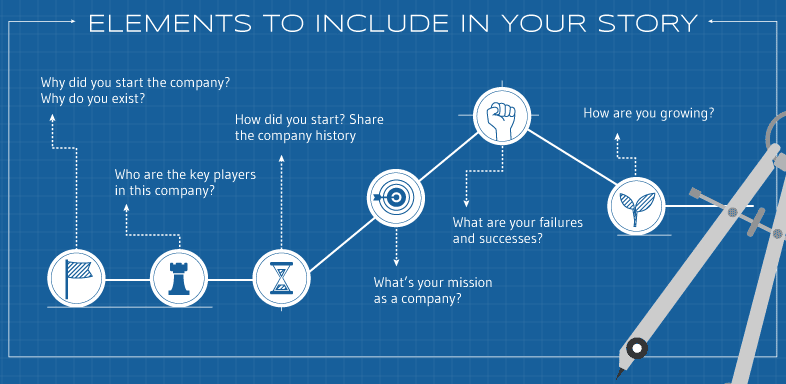
Stories are a powerful way to connect with your customers and they are a very integral part of being persuasive. They are easy to understand, relate to and they have an ability to elicit different types of emotions.
Do stories really hold that much influence in customer service?
Yes, especially when they address the customers’ pain points and legitimate frustrations. In his book, Building a StoryBrand: Clarify Your Message So Customers Will Listen, Donald Miller says:
Your customer should be the hero of your story, not your brand – this is the secret every phenomenally successful business understands.
The truth is your customers want to be satisfied, they want their own happy ending. Stories are able to transport our minds to another place, and in this place, we may embrace things we’d likely scoff at in the harsh, real world.
For instance, Nike tells the stories of professional athletes who started out just like us and ended up becoming heroes after purchasing Nike sneakers and working so hard. This makes most people forget about the price; people buy their story and, consequently, the shoes that come with them.
2. Personalize Customer Experience
Consumers today have more choices than ever when it comes to the brands they want to work with. Unfortunately, businesses do not have that luxury, so they have to always compete against each other in order to maintain their customer bases and overall sales.
It’s very important now, more than ever, to show your customers how much they matter to you and your business. If you don’t make their value clear, you risk losing them to any one of your company’s online or real-world competitors!
There are various ways you can show your customers that you care about them. One important way of doing so is personalizing their experience. 94% of businesses say personalization is critical to their success. In his Decoding the New Consumer Mind: How and Why We Shop and Buy, Kit Yarrow says:
Today’s consumers are less interested in aspirational brands; rather than admiring brands, they’re more interested in brands that admire them, know them, and serve them.
Personalization goes beyond your communication with customers doesn’t start and end with adding a name to an email, as most marketers would think. In fact, 60% of marketers admit that they struggle to personalize the customer’s experience in real-time.
When it comes to personalizing your customers’ experience, you don’t have to struggle. There are relatively simple, yet sophisticated, ways to use personalization in your customer service that goes beyond just using a name.
Here are 4 ready-to-implement ways personalization in your customer service strategy:
- Ask smart questions and listen to customer feedback
- Build buyer personas
- Make use of your customers’ location and time
- Set Up Automated Behavioral Trigger Emails
Personalization starts with knowing the customer – or even better, remembering the customer. The good news is that nowadays, it’s easy to track customer preferences and personalize customer experiences –thanks to Customer Relationship Management (CRM).
3. Aim to fulfill Customers’ Emotional Needs
Every company you see out there is in the business of fulfilling the needs of their targeted audience. If you fail to satisfy the needs of your customer, you run out of business.
By the end of this year, 45% of consumers say they will switch brands if a company doesn’t actively anticipate their needs.
You are probably wondering what exactly are customer needs?
Well, a customer need is a motive that prompts a customer to purchase a particular product or service. It drives the customer’s buying decision. Customer needs can either be physical or psychological.

Physical customer needs are easy to notice because they have a direct, measurable, and sometimes tangible cause. For example, if you are feeling sick, you need to see a doctor. If your website is loading slow, you need to have it fixed.
Physical needs are important, but sometimes customers can buy something without being driven by any physical need. A good example of this is when customers do impulse buying.
But what really drives a customer to make a purchase is not really the physical needs, but the psychological needs. This is why you often hear marketers say “customers buy on emotion and justify with logic.”
If your product doesn’t quench customers’ psychological or emotional needs, it’s very difficult to compel customers to make a purchase.
So how do you identify customers’ emotional or psychological needs?
Good question! At Invesp we unlock customers’ emotional needs using a framework known as the Jobs-to-be-done.
"Knowing all the customer’s needs in a given market dramatically changes the way a company approaches the innovation process." – @Ulwick
So, how many people in your organization today know
all your customer’s needs?#jtbd #UserExperience #CustomerExperience #mondaythoughts— Invesp (@invesp) October 28, 2019
The #JTBD framework is based on the idea that customers do not buy products or services, but they ‘hire’ them to get a wide array of jobs done or to make progress in their lives. Instead of looking at the customer through the product line, the JTBD framework helps you look at your product or service through the customer’s eyes.
According to the #JTBD framework, every customer has two important needs they want to quench. The first type of customer need is social. This is How we want other people to perceive us after using the product or service. The second type of customer need is emotional. This is the feeling that customers want to have or avoid after having purchased and used your product or service.
If you are still not convinced of how you can actually connect with customers emotionally, click here for a much detailed explanation.
4. Resolve all Issues During the First Interaction
No one enjoys being kept waiting for long.
I mean, think about those times you sat in a restaurant watching other tables being served that were seated after you? Or think about that moment you walked into a shop and waited for a shop assistant to notice and assist you.
It sucks, right?
A key driver to customer satisfaction is being able to resolve all issues during the first interaction you have with the customer. Simply put, optimal first call resolution is an essential focus for all businesses that strive to deliver quality service to their customers.
The higher your first-call resolution rate, the more satisfied your customers tend to be – and, as a result, the higher the customer retention rate and the lower your churn rate.
If you want to find out more about how to measure the first contact resolution rate and other customer service metrics that matter, click here.
5. Keep Promises and Fulfill Commitments
In one of his famous books, Voice-of-the-Customer Marketing: A Revolutionary 5-Step Process to Create Customers Who Care, Spend, and Stay, Ernan Roman writes:
In today’s competitive landscape, companies need to keep their promises to ensure they retain the trust of their customers.
Keeping promises to customers is a business necessity today unless you don’t want to achieve customer loyalty. But one thing that you should do when it comes to promises in the world of business: never over-promise or under-deliver.
Customers are more likely to express their frustrations on social media when you fail to deliver on your promises. And this is something that you don’t want because 92% of customers trust peer recommendations over your ads.
So, when you promise your customers something, stick to it. If for any reason, something changes, be respectful and inform the customer straight away.
Customers understand that there would be service lapses and problems. Customers are ready to forgive if they know that the company tried its best and that it would do anything to make amends.
Creating a brand and building its image is all about showing your customers that you value them. How do you do that? Easy, you keep promises – both the ones in the service level agreements and those the brand may subtly imply.
6. Show Empathy
If there’s one skill that your customer service team members must have, it’s empathy. Even mega brands such as Apple have a guide to empathy in their Apple Genius Training Manual to help their customer service team members to practice empathy when dealing with customers.
You can think of empathy as the ability to sense other people’s emotions and be able to imagine what someone else might be going through.
In the context of customer service, empathy is the ability to affirm customers’ feelings and indicate that you can understand their pain or frustration, even if you cannot fix it yourself.
If you think about it, most of the customer service failures involve a damning lack of empathy.
Of course, helping moody and grumpy customers is not an easy thing to do. But whatever emotional cornucopia customers come in, the duty of your customer service team members is to turn the frown upside-down to create delightful experiences.
Thank you @Macy’s for acknowledging my frustration and making things right. Impressed w your customer service! https://t.co/RL22lJErJE
— Rita Clark (@Riduchelle) February 12, 2018
It reflects positively on the brand when customers feel like they are being listened to, their concerns matter, and that the company is doing everything it can to help them.
Outlined below are some key phrases you can use to help assure your customer that you feel whatever they’re feeling:
- I would feel the same way too
- Thank you for bringing this to our attention.
- I can understand how frustrating it is when…
- I realize how complicated it is…
- I imagine how upsetting it is to…
- You’re right…
- I’m sorry you’ve had to deal with this…
- I’ve experienced this issue recently too…
- Thank you for getting in touch about this…
- I know how confusing it must be when…
- I’m so sorry to hear that…
By using any of the above empathy statements, you build trust in each customer and regardless of the reason that a customer reached out in the first place, they can walk away from it positively.
7. View Customer Complaints as Opportunities
Sometimes things happen and customers get frustrated and they end-up complaining. What matters in such situations is how you respond to negative customer feedback. If you are smart enough, you can use the feedback to your advantage.
This reminds me of one of Bill Gates’ famous quotes:
Your most unhappy customers are your greatest source of learning.
Every customer’s complaint is an opportunity for you to see your business’ flaws through an outsider’s lens. You can actually think of customer complaints as the mismatch between your brand promise and what it delivers to the customers.
When customers complain, they just want you to deliver on your brand promise. They want to restore their faith in your company. Mind you, not every customer is ready to switch a supplier in the snap of a finger.
Turning customer complaints into constructive opportunities don’t only make customers feel satisfied, but it also helps stem customer churn, drive ROI, and build brand loyalty. In other words, your customer service team can help you take your business to the next level when they learn to value customer complaints.
Still not convinced? Take a look at some of the key advantage of customer complaints:
- Complaints highlight the exact areas where your products or services need improvement.
- Customer complaints open opportunities for your team to have honest discussions with your customers. These conversations will make customers feel cared for, and in return, they will start caring about you.
- Customer complaints provide valuable insights into how productive your customer service team is and how to improve them. They can be used as training models for new team members.
When servicing customers, we need to shift our thinking about complaints by seeing the real value that comes with it. If I were you, I would actually encourage all sorts of customer feedback –whether it’s positive or negative.
8. Show Gratitude
What do you feel when someone thanks you for something? For a comment in a meeting, a task done at home, an extra step taken, an encouraging word.
You probably feel seen, valued, that you matter to that person. Maybe a little startled, maybe wondering if you really deserve it, but also glad. Personally, this is how it is for me.
Turning it around, when you say “thank you” to your customers, it’s a small moment that can build a long-lasting relationship.
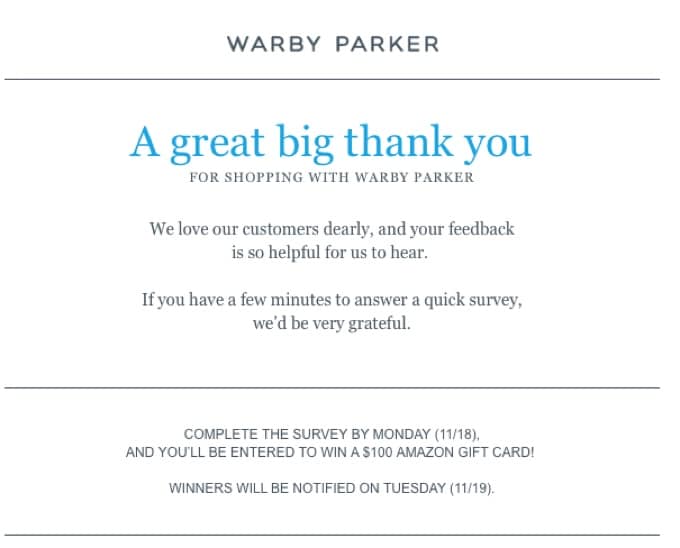
Showing gratitude to your customers extends past the great service you provide and aims to build loyalty and reinforce strong lasting relationships. Beyond making your customers happy, it reflects a positive image of your brands.
I understand, sometimes you can’t possibly reach out to every individual – who has purchased from you, completed your survey, dropped a 5-star review – one by one, and show your gratitude. But you can use your company social media platforms like this:
To everyone who has ever called, chatted, or submitted a survey: Thank you, thank you, AND thank you. Your feedback helps us #GrowBetter. Learn more at https://t.co/Up6mKFj240 pic.twitter.com/bNBcrCXQOR
— HubSpot (@HubSpot) September 25, 2019
Some businesses make the mistake of waiting for long to thank customers –they wait to show a token of appreciation until they have the budget or the time to start thinking about customer appreciation ideas. You don’t have to wait until you have built a bigger community and stronger company to thank the people who helped you climb that ladder of success.
It might sound like a reasonable thing to do, but that’s not a winning strategy. Thanking your customers from the very beginning helps you increase the retention rate –and this is something that will need along the way. No matter the size of your business or customer base, there are simply creative and enjoyable ways to show your customers that you appreciate them.
9. Offer Instant gratification
The phrase “good things come to those who wait” is not applicable to the world of customer service. Keep your customers waiting…and you’ll watch them knock on your competitor’s door. This is why Jérémy Gallemard, CEO and Co-Founder of Smart Tribune says:
Consumers today are more inclined to share their experiences, both good and bad, desire greater control over the entire purchase journey, and demand near-instant gratification whenever they need support.
We’re now living in a world where instant gratification is the accepted standard –this is why 43% of customers expect a response within a day of sending an email.
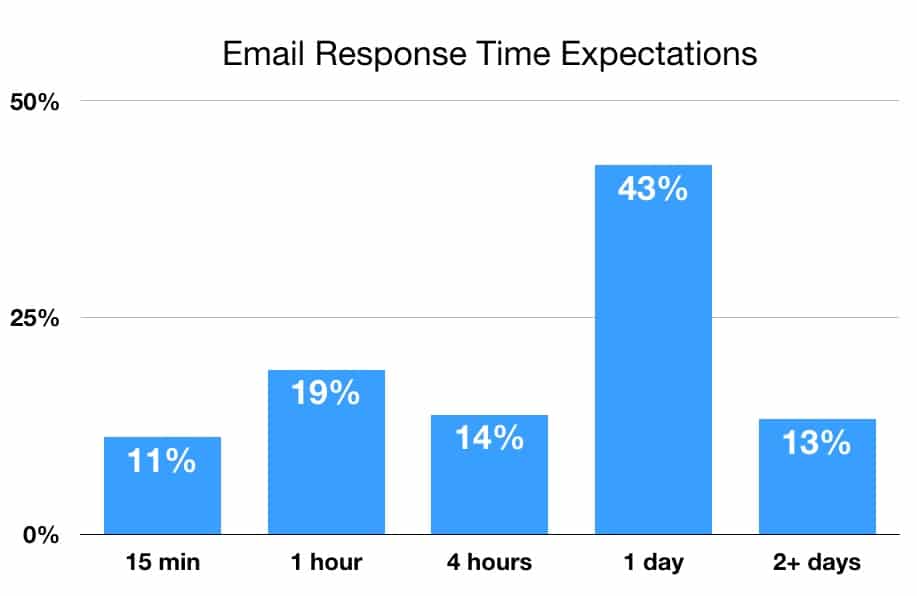
Most of your customers have very little patience when browsing. They easily get frustrated. They want and expect instant gratification and when they don’t get it, they are gone forever.
How can you provide instant gratification for the customer? There are many ways:
When we talk of instant gratification, more often than not, people think that it should happen at the end of the transaction. But every touchpoint of the customer journey there should be an element of instant gratification.
Before committing to making a purchase, customers wish to view results prior to making a purchase decision. This can be termed as a manifestation of the desire for instant gratification in consumer behavior.
For example, women shopping for beauty products and cosmetics may want to test these products, such as lipsticks, perfumes, and skincare creams before they buy.
Just after doing business with you, customers want to feel gratified. Our mid-brains lights up when we think about receiving something that right away (and you should always aim to fire it up).
Your website has to be without any usability issues – when loading pages it should be as fast as a hot knife slicing through butter. This is to say that your web pages should not take more than 3 seconds to load.
Instant gratification on eCommerce websites can also be delivered by making sure that they are open 24/7 for shopping. This means that your customer service also has to be available 24/7. The idea behind a 24/7 customer service is so that you respond to customer queries as quickly as possible. If your customer service agents can’t be available 24/7, chatbots can fill that gap.
Rewind to a few years back, same-day or next-day delivery was something which was unthinkable. Many eCommerce businesses thought of it as too expensive and complicated to fulfill.
But today, 80% of customers want same-day delivery to be an option at checkout and 23% of consumers are willing to pay a premium for same-day delivery. To find out more about the importance of same-day delivery (statistics and trends), check this infographic. Same-day or next-day delivery has become a benchmark for customer services and businesses are using it to lure customers.
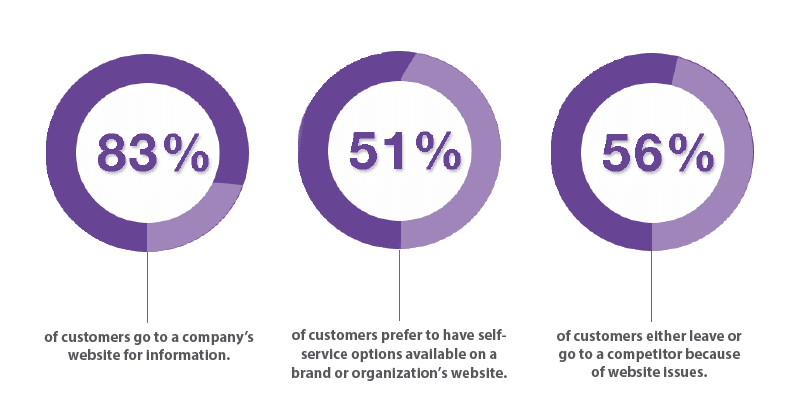
The other thing that sparks immediate gratification is self-service. This is why 51% of customers prefer to have self-service options available on a brand, and 76% of customers prefer self-service to interact with a customer service representative via the phone or email. But before you think of having a self-service feature, it’s critical to make sure that the information is correct.
In addition, every turn of your copy should preach the gospel of instant gratification. There are certain words that have proven to be good at switching on the mid-brain activity that makes a customer want to buy. According to Copyblogger, some of the most persuasive words that instantly help you sell more are instant, immediately, fast, new, now, quick, etc.
What makes these words spell out instant gratification is they allow customers to envision their pain points or problems being solved right away soon after making a purchase.
10. Understand the 3 Types of Buyers
Successful customer service teams understand their customers –they do this by going beyond knowing their names, demographics, and geographic locations. Knowing the type of customer you are dealing with is key for any business endeavor, no matter the industry you operate in.
Your customer service team needs to understand that there are three types of buyers: the average spender, the spendthrifts, and the tightwads. These three types of buyers are simply characterized by the “pain” they experience when buying something.
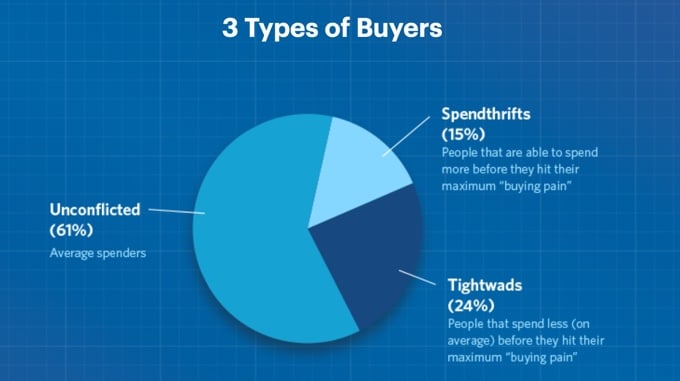
The majority of people are average spenders –they are more likely to respond to persuasion and make an informed decision.
Spendthrifts are the most fun to provide service to because they are always ready to spend with no hesitation.
On the other end of the buyer spectrum, are the tightwads. This group of buyers does not enjoy spending money because they perceive it as a non-renewable resource.
It is challenging if not impossible, to try to figure out which types of buyers are spendthrifts, which are average, and which are tightwads. As different as the customer types are, so are the persuasion techniques you need to use.
Appealing to average spenders is not that challenging because they are most likely to respond to your persuasion techniques. You can use different tactics such as increasing your traffic to pull in a high number of visitors, do conversion optimization services, and make your website copy more persuasive.
Spendthrifts will buy with or without you persuading them to. When appealing to them just focus on the pleasure and provide them with instant gratification.
To impress tightwads you first have to do some research before you put an offer on the table. Instead of focusing on pleasure, the offer should be all about combating pain or customer problems. The more compelling the solution, the more quickly the tightwad will pay.
11. Use the Scarcity Principle
Depending on how you look at it, this point may be a bleed-off of the previous section. But I think it deserves it’s own section because, at its core, customer service is all about a sense of urgency.
One of the oldest and smartest tricks in both customer service and marketing books is to create a sense of urgency by using the scarcity principle.
As a Media and Society Studies graduate, I still remember the Principles of Economics class that I took in college, one of the key lessons I vividly remember was about the law of supply and demand –which states high demand is a result of low supply of a product or service.
Changes in the supply and demand of products will result in Dr. Robert Cialdini’s psychological principle of persuasion –which implies that the more difficult it is to obtain a product or service, the more valuable it becomes.
We are all more motivated by the thought of losing something than by the thought of gaining something of equal value. People are more likely to buy a product when they think that it will soon be unavailable.
Your customer service team can use the scarcity principle to persuade people to purchase a product. One good example of a brand that often uses the scarcity principle to promote and sell its products is Starbucks.
https://www.instagram.com/p/Bw4Pbtpn_0e/?utm_source=ig_web_copy_link
In the above Instagram post, Starbucks indicates that the #S’ mores Frappuccino drink is back, but it would only be available for a short period of time.
Yes, the scarcity principle works…it really drives sales. But you have to use it correctly. By this, I mean that you have to phrase the product scarcity as if there used to be a large supply, but due to increased demand, only a few products were left. This way consumers will be more receptive.
Conclusion: Understanding customer psychology leads to customer satisfaction
Even if you are providing a fantastic product or service, if your customer service doesn’t follow any of the above tips, be prepared to lose customers over it. Understanding consumer psychology is the gateway to achieving customer satisfaction. Every customer that interacts with every touchpoint of your brand, must leave feeling positive about the service they receive. I understand that great customer service doesn’t happen overnight, and it’s harder to achieve than you may think –but it’s attainable when you really know how consumers behave.

